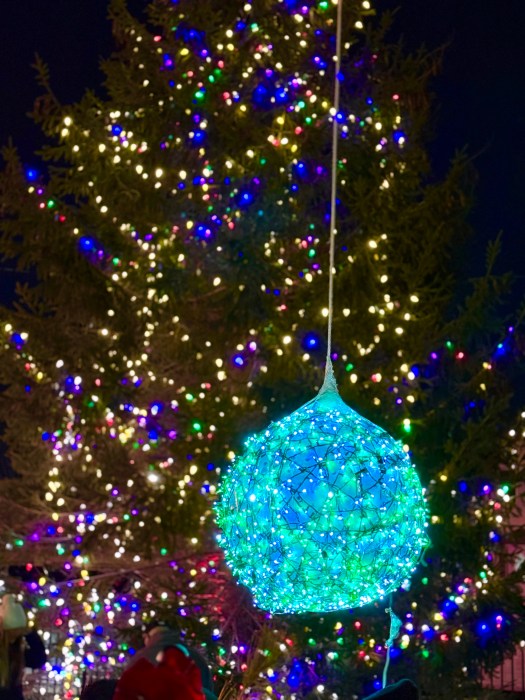The reasoning might not have been clear or slightly muted when I was growing up around the reasons that we left the Christmas decorations up until the 12th night after Dec. 25.
Growing up, if you asked me why, I’d probably shrug and say, “I dunno; we just do,” but long after I left home and began to share traditions and culture with my shipmates in the Navy, I learned more about the cultural and religious significance of my family’s own “Little Christmas,” also know to others as “Twelfth Night” or “Three Kings Day.”
The tradition of taking down Christmas decorations after Little Christmas on Jan. 6 is rooted in various cultural and religious practices.
Many believe that waiting until this date, also known as the Feast of the Epiphany, honors the arrival of the Magi—Balthazar, Melchior, and Gaspar—and the end of the Christmas season.
It symbolizes the completion of the Twelve Days of Christmas, observed from Dec. 25 to Jan. 6. Some cultures associate leaving decorations up beyond this point with superstitions or consider it inauspicious. Taking down decorations after Little Christmas marks a transition from the festive season, signaling the conclusion of holiday celebrations.
Three Kings Day, also known as Epiphany or the Feast of the Epiphany, is a Christian holiday that commemorates the visit of the Magi to the infant Jesus. Celebrated on Jan. 6, this festival marks the end of the Christmas season in many cultures around the world.
The roots of Three Kings Day can be traced back to the biblical account of the wise men who followed the star to Bethlehem. The story is found in the Gospel of Matthew, and it emphasizes the universal significance of Jesus’ birth, as the Magi were not Jews but rather foreigners. Their journey symbolizes the manifestation of Jesus as the Savior for all people, regardless of their cultural or ethnic background.

The celebration of Three Kings Day has evolved over the centuries, blending religious and cultural traditions. The holiday has a rich history in various regions, with unique customs and practices that reflect the diverse ways in which people observe this occasion.
In Latin American countries, Three Kings Day, or “Día de los Reyes,” is a major celebration. Families come together to share a special meal, and in some places, a “rosca de reyes,” a sweet bread adorned with candied fruits, is a traditional treat. Hidden within the bread is a small figurine representing the baby Jesus, and whoever finds it is blessed and often required to host a celebration on Candlemas Day, observed on Feb. 2.
In Spain and other Spanish-speaking regions, the day is marked by colorful parades known as the “Cabalgata de Reyes,” during which the three kings ride through the streets on camels, throwing sweets and small gifts to the crowd. Many families attend these parades, and children leave their shoes out on the night of Jan. 5 to find gifts from the Magi the next morning.
Many people, including my immediate family, exchange one single meaningful gift on Three Kings Day (Jan. 6). I reserve one small and inexpensive gift that usually has some personal significance between my daughter and myself to give her on Jan. 6. Sometimes, it is a gift that I know she had wished for but did not receive on Christmas, or it is an item to complement something that she did receive on Christmas.
A neighboring family has a similar tradition, but their criteria is that the gift should be handmade, with natural items, by the giver, to symbolize the gifts that the Three Kings offered–gold, frankincense and myrrh. I even remember one year, being frantically asked for “baby powder” by the neighbor recreating “dusty footprints left by the camels traveling with the Three Kings” to deliver her son’s gift the next morning. Cute.
In some Eastern European countries, particularly in Orthodox Christian traditions, Three Kings Day is associated with the blessing of water. This ritual symbolizes the baptism of Jesus in the Jordan River and is performed by priests who bless bodies of water, such as rivers and lakes. People take part in this ceremony to cleanse themselves spiritually and seek protection for the coming year.
In Ireland and the United Kingdom, Jan. 6 is often referred to as “Little Christmas” or “Women’s Christmas.” It is a day when women traditionally take a break from household chores, and families gather for festive meals and celebrations. The day is also known as Nollaig na mBan in Irish, translating to “Women’s Christmas.”
Three Kings Day and Little Christmas hold a special place in the hearts of people around the world. The traditions associated with these celebrations vary, but they all share a common thread of joy, gift-giving and the recognition of the universal significance of the Christmas story.



































